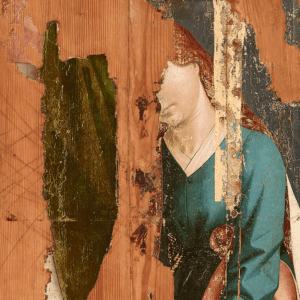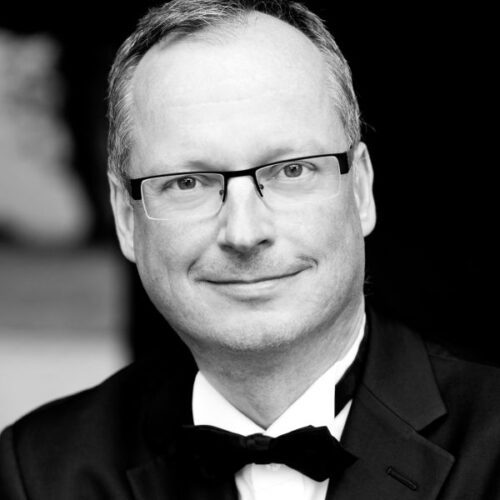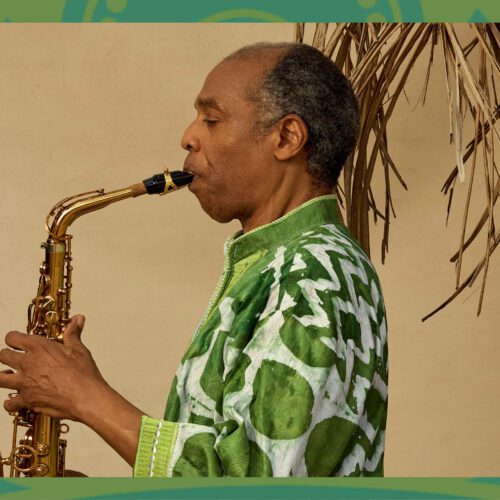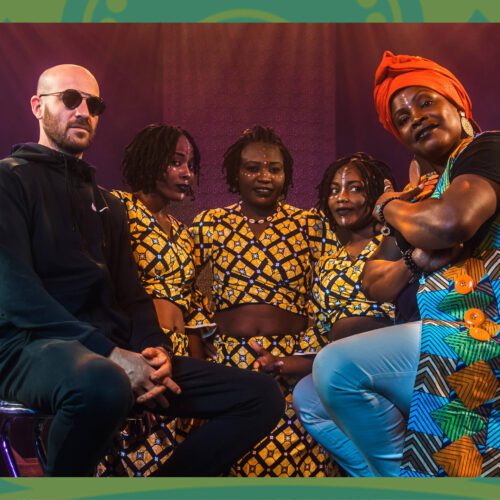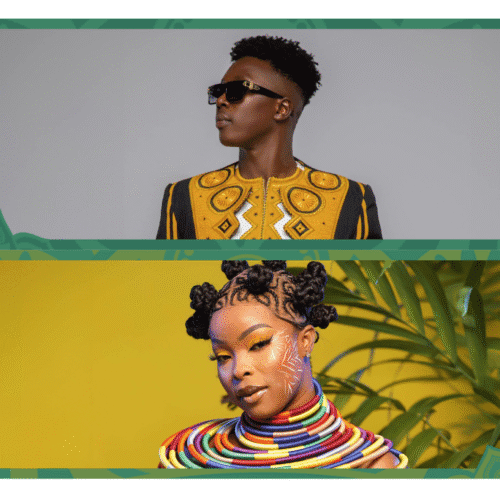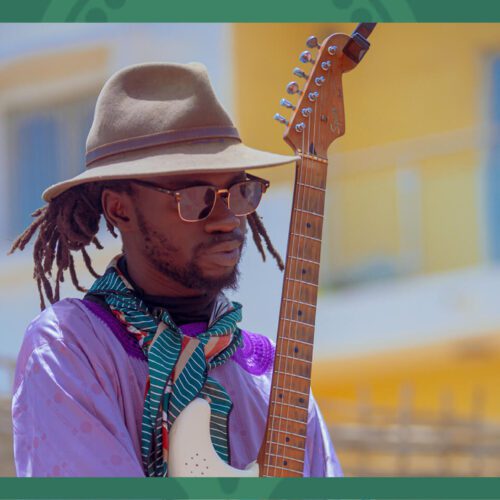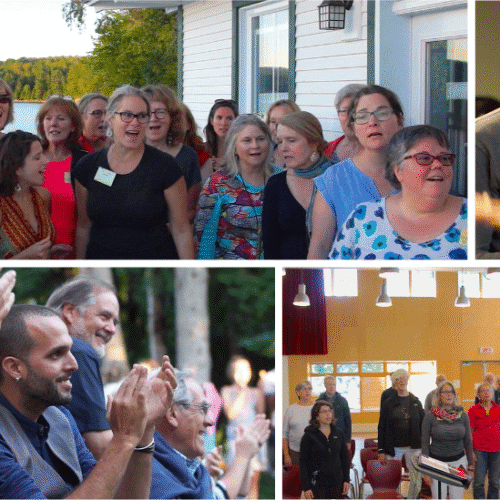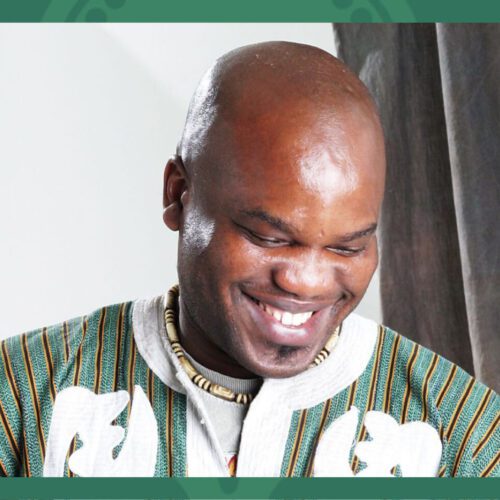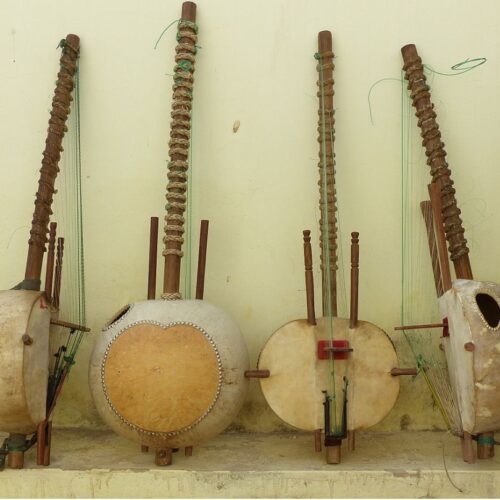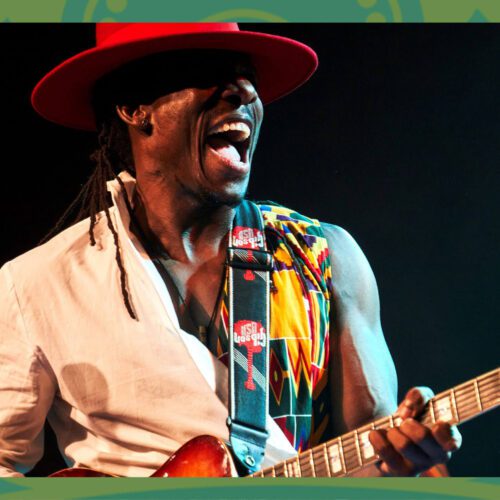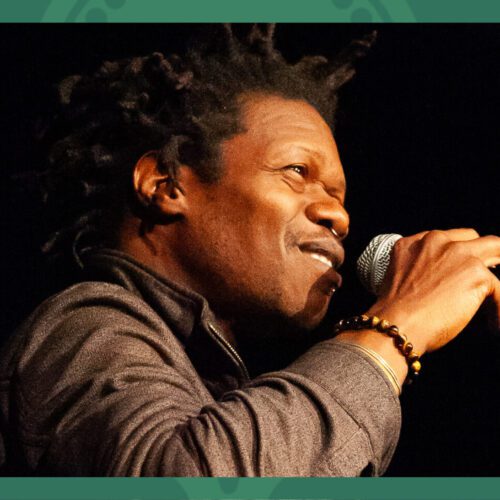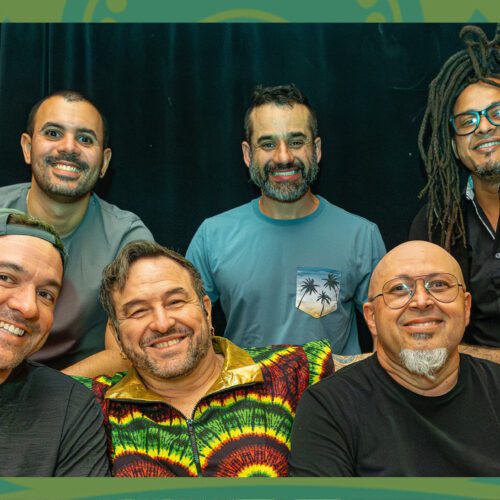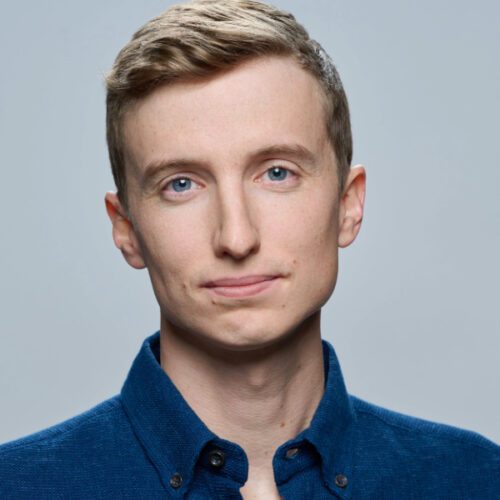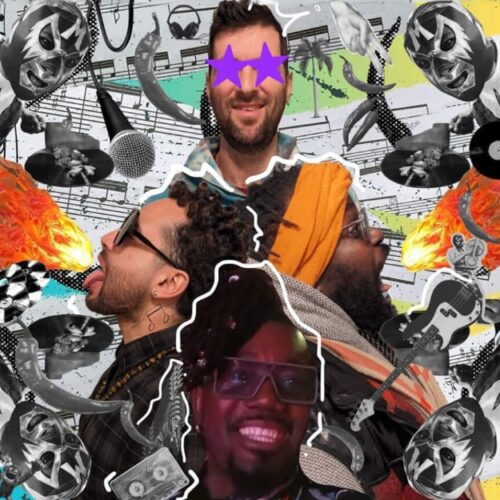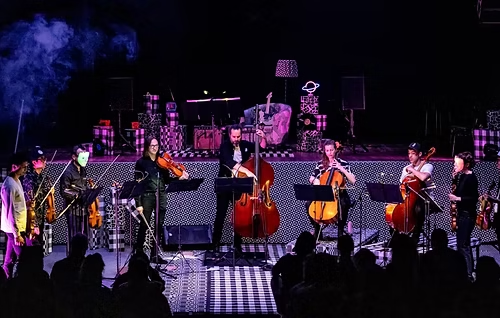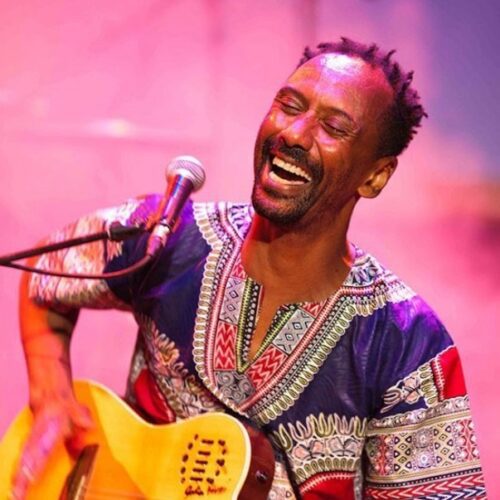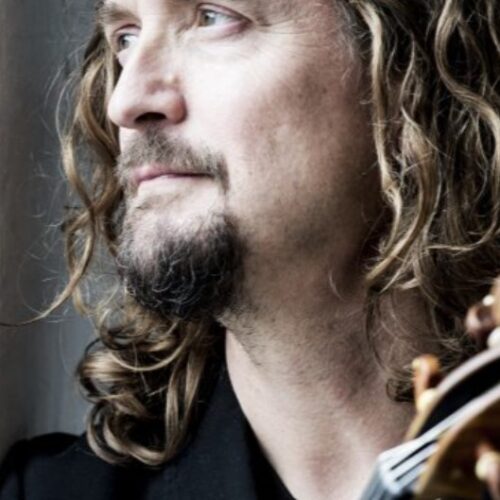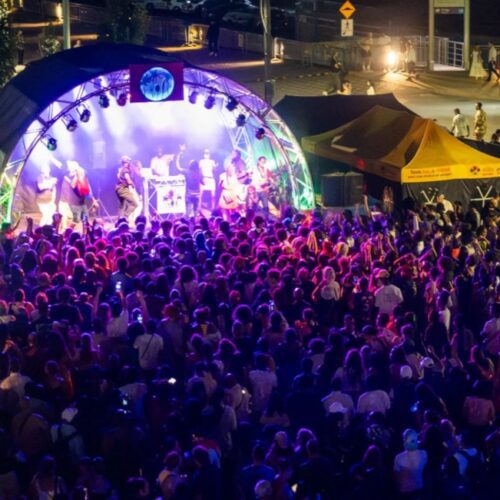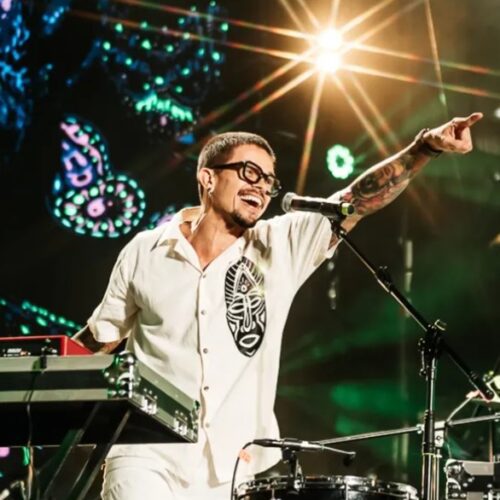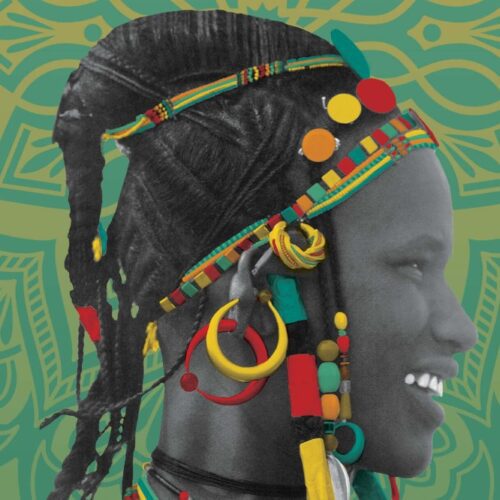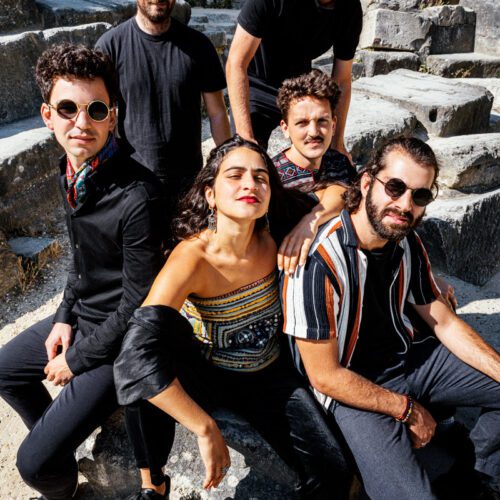Additional Information
Innovations en concert, inspiringly directed by Isak Goldschneider for some fifteen years (first with Cassandra Miller, then on his own since 2014), offers discerning and curious music lovers treasures of musical experience in each of its seasons. The 24-25 version concludes on 30 June with another find that promises moments of contemporary grace: the combination of a work by Ukrainian-Dutch post-minimalist composer Maxim Shalygin (Angel, for violin and cello, in its Quebec premiere) and another by Montrealer Olivier Alary, a vast fresco lasting some 40 minutes for 12 lap steel guitars. Yes, twelve lap steel guitars! It promises to be a fascinating evening at Saint-Denis Church here in Montreal. I spoke to Olivier and Isak about the works on the programme and other things.
Olivier Alary, tell us about your career path, which took you from architecture studies to music and then to Montreal.
It’s a fairly winding path, punctuated by forks in the road, but one that has developed organically. I first studied architecture, which enabled me to develop a sensitivity to structure, space and form – notions that, over time, found a natural echo in my approach to music.
It wasn’t long before I felt the need to turn my attention to sound. This led me to London, where I studied sound art at Middlesex University. It was a seminal period: I discovered a very free and experimental approach to sound, at the crossroads of music, installation and contemporary art.
In 2000, I released my first album under the pseudonym Ensemble on the Rephlex label, founded by Aphex Twin. This album attracted the attention of Björk, with whom I had the chance to collaborate on several projects, including her album Medúlla. That meeting was a turning point, giving me access to a wide range of creative contexts, from experimental music to avant-garde pop and multidisciplinary collaborations with Doug Aitken and Nick Knight.
After London, I spent some time in New York, before settling in Montreal, where I found a particularly favourable environment in which to develop my practice. It was here, after releasing a few albums on FatCat Records, that I really plunged into film music, a field in which I have worked for nearly fifteen years. I composed music for around sixty films, mainly documentaries and auteur dramas, working with filmmakers from a wide variety of backgrounds. This experience has enabled me to explore in depth the link between music and narrative, between sound and image.
After this long period of professional practice, I felt the need to return to the fundamentals of instrumental composition. With this in mind, I undertook a master’s degree in composition at the Université de Montréal, in order to better articulate my technical knowledge and explore new avenues of creation. It was within this framework that I developed my acoustic instrumental pieces, taking as my starting point the translation into written form of the techniques and processes I had been developing in the studio for over twenty years. This work enabled me to open up a dialogue between the electronic world I had cultivated and orchestral writing, by seeking to transpose production, editing and sound-processing gestures into a purely instrumental language. Vestiges is in line with this research.
And finally, I stayed. Montreal was an obvious place to anchor myself, both artistically and personally. The city has an exceptional pool of musicians, trained in four universities and a conservatoire, which fosters very high-level collaborations. Then I met my wife here, and we had two children. Today, even if my career path may seem a little fragmented, each stage has fed into the next, and the whole forms a coherent trajectory that continues to evolve.
DETAILS AND TICKETS FOR THE ANGEL ET VESTIGES CONCERT
What models (composers, musical styles) have shaped your musical personality?
My musical personality has been shaped by a wide range of influences, often by artists who like to push the boundaries, whether in music, film or the visual arts. In cinema, directors such as David Lynch, David Cronenberg and Andrei Tarkovsky have had a profound impact on me through their unique and often destabilising worlds. In the visual arts, I’m thinking in particular of figures like César, Jean Tinguely and Niki de Saint-Phalle, whose works question matter and movement, as well as Hans Bellmer and Gerhard Richter, who explore form and perception in radical ways.
Musically, I was strongly influenced by Krautrock groups like Can, Neu! and Kraftwerk. Their ability to blend hypnotic rhythms, electronic textures and improvisations fed my taste for sound experimentation. I also have great admiration for the psychedelic free jazz of Sun Ra and Pharoah Sanders, who offer incredible energy and freedom of expression.
Indie rock, particularly bands like Sonic Youth and My Bloody Valentine, showed me how noise, texture and layers of sound could become expressive elements in their own right.
In addition, electroacoustic music – particularly the work of Bernard Parmegiani and Luc Ferrari – has had a profound influence on my approach to composition, teaching me how to sculpt sound and create rich sonic spaces from subtle details.
I’ve also been inspired by twentieth-century contemporary music, with composers like György Ligeti, Gérard Grisey and Luciano Berio, who explore sound matter with great finesse. American minimalism, represented by Steve Reich, David Lang and Julia Wolfe, as well as the spiritual minimalism of Arvo Pärt and John Tavener, have also left their mark on my sensibilities through their ability to build powerful emotions through repetition and simplicity.
Finally, avant-garde pop songs by artists like Björk – with whom I’ve been lucky enough to collaborate – but also Velvet Underground, Robert Wyatt, Chico Buarque and Brigitte Fontaine, have always been a source of inspiration, combining musical innovation and poetry.
Beyond styles or names, what really drives me is this constant desire to go beyond conventions, to create bridges between different languages and mediums, and to seek music that can at once question, surprise and move.
Alary has collaborated with artists such as Björk, Nick Knight, Cat Power and Doug Aitken, and has released his music on labels such as Rephlex, Fatcat Records, 130701 and LINE. He has also scored over fifty films, several of which have won awards at prestigious festivals such as Cannes, Sundance and Venice.
How do you see the difference between composing for pop artists and artists associated with strict contemporary music?
I see composing for pop artists and for artists associated with strict contemporary music as two different but profoundly complementary approaches. I don’t see them as separate worlds, but rather as creative spaces that are in constant dialogue and mutually enriching.
Pop music, by its often more direct and accessible nature, offers a framework in which to play with shorter formats, clearer structures and an emotional immediacy that quickly touches the listener. It also allows us to explore more electronic sounds and textures which, although simpler on the surface, require great precision and sensitivity to maintain their impact.
Strict contemporary music, on the other hand, opens up a field of research in which we can experiment freely with more complex forms, advanced techniques and an abstraction that encourages us to question sound matter, time and perception. It’s a world in which rigour and depth coexist with innovation, enabling me to develop highly sophisticated instrumental pieces such as Vestiges, which took me over ten years to research.
What’s interesting is that these two worlds work like communicating vessels for me. The experience I’ve gained in contemporary music gives me the tools to enrich my pop compositions, by adding more subtlety, originality and density. And conversely, working on more immediate pop formats stimulates my creativity and pushes me to simplify, to be more direct, while retaining an expressive richness.
In my experience of film music, this ability to navigate between very different registers is essential. Depending on the genre of the film – be it suspense, horror or drama – it is often necessary to bridge the gap between accessible music that supports the narrative emotion and more experimental textures that create particular and original atmospheres. This has enabled me to develop a great deal of flexibility and an open-mindedness that feeds both my personal projects and my collaborations.
In short, rather than seeing pop and contemporary composition as two distinct disciplines, I see them as two poles of the same creative continuum. This oscillation between rigour and immediacy, between experimentation and emotion, allows me to constantly evolve my writing and hone my personal artistic voice, capable of crossing different styles and audiences.
Vestiges for 12 lap steel : why 12? Why lap steel? What attracts you to this instrument?
I chose to use twelve lap steel guitars in Vestiges because it’s an instrument that has fascinated me for the last fifteen years or so, particularly in the context of film music and my personal projects. What particularly appeals to me about lap steel is its unique sound texture, especially when played with tremolos and a slide placed directly on the strings. There’s something very vocal about the sound, almost like a human voice, which gives it a very special expressiveness.
Moreover, lap steel is often perceived as a limited instrument, with very strong connotations – particularly country or western – which can be reductive. My intention was precisely to break down these clichés, to explore its potential beyond these styles, to offer a totally different kind of music, further removed from these traditional genres.
I was also interested in the fact that the range of the lap steel is quite similar to that of a choir, from low to high pitches, which naturally led me to imagine similar voice patterns, with registers ranging from bass to soprano.
Why twelve guitars? Because a guitar has six strings, and the chosen choir has six voice registers. By doubling this – i.e. by doubling six – we get twelve instruments, which sounds much better and, above all, offers greater harmonic richness and depth of sound. This arrangement also allows us to play to the full the spatialisation of the sound, by distributing the guitars throughout the space to create a very interesting acoustic immersion.
Finally, I knew that working with this instrument in a long form would be a real challenge, but this very limitation stimulated me: I wanted to see if I could build a solid, coherent piece around this singular sound.
Vestiges is a unique work, the fruit of ten years of research
The message, or the main idea behind Vestiges?
The main idea behind Vestiges is linked to a reflection on the traces left by certain cultural, spiritual or social forms in transformation. I have the impression that we are living in a period of transition, where certain traditional landmarks – whether linked to religion, family structure or wider societal frameworks – are gradually changing or losing their central place in our lives.
With this piece, I wanted to evoke these transformations, imagining a kind of requiem for these ancient forms, and more specifically for the vocal and liturgical traditions stemming from various spiritualities. Vestiges is an attempt to summon these voices from the past, not to freeze them in a nostalgic posture, but to make them resonate in a different way – from a sensitive, almost mediumistic perspective. The twelve lap steel guitars become like relays, transmitters of sound memory, allowing these forms to reappear in a new light.
What adds an even more poignant dimension to the performance is the fact that it is being presented in the church of Saint-Denis – a site of magnificent architecture, steeped in history, but which is also beginning, in very real terms, to become an architectural relic. This context resonates perfectly with the theme of the work.
Musically, Vestiges is inspired by different forms of polyphonic vocal music, such as madrigals, choirs, Orthodox liturgical music and Gaelic psalmody.
Isak, tell me about Maxim Shalygin.
Maxim Shalygin is a Ukrainian-Dutch composer who has been living in the Netherlands since 2010. Like Olivier, he has a lot of experience of writing music for contexts outside the concert stage, such as film, dance or theatre – which perhaps explains, in my opinion, why their works share a certain atmosphere: a similar approach to space, sound and interiority.
What attracts you to his music? Why did you choose to play this piece (Angel) at this time?
The introspective nature of Shalygin’s music and its ability to evoke deep emotional landscapes resonate strongly with me. Angel, composed in 2020 during the global upheaval of the COVID-19 pandemic, reflects on humanity’s relationship with nature and the fragility of existence – it can be heard as a meditation on historical trauma. Performing this work today seems to me entirely appropriate, given what we are currently experiencing in the world.
How would you describe Angel’s sound? Can it be compared with other styles with which we are already familiar?
Angel offers listeners a delicate interplay between violin and cello: a meditative, ethereal soundscape. The work is inspired by Maurice Ravel’s Sonata for violin and cello, composed a century earlier in the wake of the First World War and the Spanish flu pandemic. As with Ravel, melody is at the heart of Shalygin’s expression, resulting in a work that I find both timeless and deeply human.
Any else to mention?
It’s interesting to underline the intersections of meaning between Angel and Vestiges d’Olivier, a 42-minute composition for twelve amplified lap steel guitars and electronic diffusion. There’s something very Shalyginian about the spectral vocality of Vestiges – this ghostly choir of echoes and reverberations floating between memory and oblivion. Each guitar, played with extensive and unconventional techniques, becomes a channel for fragments of sound, like echoes of forgotten voices: it’s perhaps reminiscent of another great Ukrainian masterpiece [Sergei Paradjanov’s Shadows of Forgotten Ancestors].
Vestiges draws on structural principles borrowed from madrigals, Orthodox liturgy, Gaelic psalms and chorales, to build a sound architecture rooted in the past while avoiding nostalgia. This emotional immediacy and attention to memory reminds me very much of Shalygin’s work; it is, for me, a fine example of convergent musical evolution.
I’m very grateful, in this project, for the opportunity to engage with works that challenge us musically and make us think about memory and the ephemeral nature of existence. As far as I’m concerned, music – and art in general – is a way of life.
Performers
Angel by Maxim Shalygin :
Adrianne Munden-Dixon, violin
Audreanne Filion, cello
Vestiges by Olivier Alary :
Jonathan Barriault; Nicolas Caloia; Steven Cowan; Simon Duchesne; Ben Grossman; Marc-André Labelle; Dominic Marion; Pierre-Yves Martel; Matt Murphy; Jean René; Pascal Richard; Julien Sandiford – lap steel guitars
Isak Goldschneider, musical director
